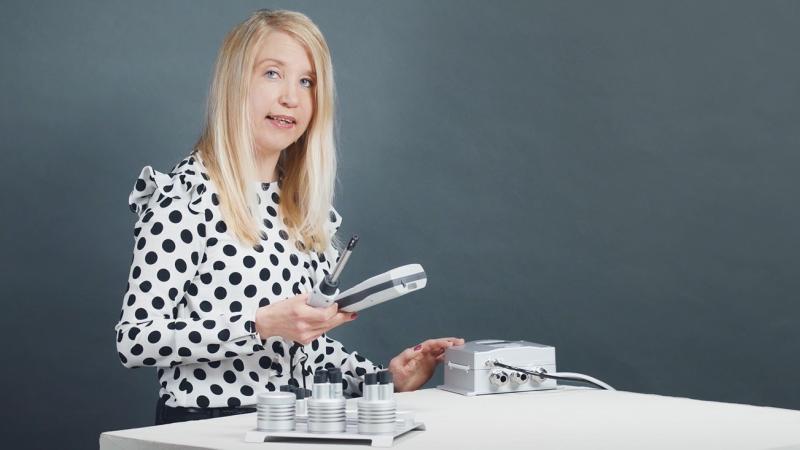Calibrazione in-situ ad un punto: l'opzione facile e veloce
Esistono molti modi per avvicinarsi alla calibrazione e alla regolazione degli strumenti di umidità relativa. Idealmente tutti gli strumenti dovrebbero essere controllati e certificati in laboratori accreditati secondo i più alti standard. Nel concreto dobbiamo bilanciare tempi, costi, requisiti tecnici, competenze e le esigenze specifiche di ogni singola applicazione.
Gli utenti spesso chiedono ai produttori un intervallo di calibrazione consigliato. Questo è un punto di partenza ragionevole quando si pensa alla frequenza con cui calibrare i propri strumenti, tuttavia in pratica le prestazioni di uno strumento possono peggiorare a velocità diverse a seconda delle condizioni in cui viene utilizzato, pertanto è importante stabilire un intervallo di calibrazione appropriato.
Per quanto riguarda l'esecuzione della calibrazione stessa, sono disponibili diverse opzioni: è possibile configurare il proprio laboratorio di calibrazione, inviare gli strumenti a terzi per la calibrazione di laboratorio o eseguire autonomamente un controllo sul campo o una calibrazione in situ a un punto.
La calibrazione in situ a un punto utilizza uno standard di lavoro per calibrare uno strumento da campo fisso senza doverlo mettere fuori servizio, ad esempio quando un tecnico utilizza un dispositivo portatile per controllare un trasmettitore montato a parete. Il vantaggio principale di questo metodo è che è facile e veloce. Non ci sono tempi di inattività per lo strumento da campo e non è richiesta manodopera aggiuntiva per lo smontaggio e la reinstallazione. Tuttavia, lo svantaggio di questo metodo è la mancanza di un secondo punto di calibrazione per indicare la corretta risposta dinamica dello strumento da campo. Se le condizioni misurate sono stabili per un breve periodo, può essere sufficiente soffiare delicatamente sul sensore e osservare la risposta e il recupero dello strumento; se le condizioni misurate sono molto variabili, si consiglia una calibrazione multipunto.
Il misuratore di umidità e temperatura portatile HUMICAP HM70 di Vaisala è progettato per la misurazione complessa dell'umidità in applicazioni di controllo a campione. È anche ideale per il controllo sul campo e la calibrazione degli strumenti fissi per la misura dell'umidità di Vaisala. I seguenti trasmettitori possono essere calibrati utilizzando l'HM70: HMDW60/70, HMW61/71, HMD/W20/30, HMP130, serie HMP230/240, serie HMT320/330, serie HMM210 e il trasmettitore DMW19.
Quando si esegue la calibrazione sul campo, accertarsi di controllare e regolare la lettura di un trasmettitore fisso rispetto a una sonda di riferimento calibrata collegata all'HM70. Le calibrazioni a uno o due punti possono essere eseguite su trasmettitori e moduli industriali (serie HMP230/240, serie HMT320/330 e moduli HMM210) utilizzando un indicatore Vaisala MI70 e il calibratore di umidità HMK15 di Vaisala.
Nel seguente video esaminiamo come eseguire la calibrazione e la regolazione in situ a un punto per il Vaisala HMT330 utilizzando un Vaisala HM70. Vedere altre alternative di calibrazione dell'HMT330 qui.


Comment
Adjustment and calibration
Calibration means comparing the instrument reading with a reference. Adjustment is correcting the instrument to minimize deviation from the calibration reference. It is important to understand calibration uncertainty when deciding whether or not to make adjustments to your measurement equipment. The amount of calibration uncertainty varies depending on multiple factors, including temperature differences, the thermal mass of the instrument, and the measurement technology used. For this reason, it may not be wise to make small adjustments, because you may end up adjusting the random error and adding noise to your measurements as a result
Single-point calibration vs. multi-point calibration:
In single-point calibration, the calibration is performed at one point against the working standard by placing the reference instrument as close to the unit under calibration (UUC) as possible. It is important to allow sufficient stabilization time so that there is a temperature equilibrium between the working standard and the UUC. Single-point calibration is an effective way to maintain a sensor’s performance in applications where the operating conditions do not vary greatly. Sensors that operate at a stable temperature, humidity, pressure, and so on are ideal candidates for single-point field calibration.
Using a working standard and generator or chamber, which is able to produce various points enables the user to perform multi-point field calibration. The difference between one-point field calibration and multi-point field calibration is that the UUC must be removed from the process.
Laboratory calibration vs. field calibration
Laboratory calibration is the most accurate method of calibrating measurement equipment. It offers lower uncertainties than field calibration, environmental effects are minimal, and the number of factors that can influence the calibration process is significantly reduced. Field calibration provides the opportunity to perform rapid checks and diagnostics without the need to remove measurement equipment.
Handheld devices are especially good for quick pass/fail checks, but with a bit of extra care and attention, they can also be used to perform single-point calibration and adjustments in the field.
The GMP regulations specify only that sensors should be calibrated, and do not provide any guidance as to the specific calibration method. It is up to you to decide which calibration method is suitable for your application and will provide you with confidence in your measurements. Auditors and clients may have preferences or requirements of their own that exceed the GMP regulations, so you should have a solid rationale, including a risk assessment, for any calibration method you choose. If you have questions about the benefits and risks of a given calibration method, your best course is to consult a metrologist for advice.
Best regards,
Sanna Lehtinen and Paul Daniel
Our dewpoint probes contain DRYCAP sensor. Unfortunately, DRYCAP sensor is not sold as a spare part as it is not easy to replace. You may either send your existing probe to Vaisala service center for sensor replacement (Select CRS Product | Vaisala Store) or buy a new dewpoint probe. If you are referring to our humidity products, then we do have INTERCAP sensor that is user changeable: INTERCAP® Humidity Sensor 15778HM | Vaisala Store. It is compatible with following product: HMD40, HMD50, HMW40, HMW50, HMD42, HMW53, HMW80, HMP60, HMP50, HUMITTER, HMD60Y, HMD60U, HMD70U, HMD70Y, HMT330.
Invia nuovo commento